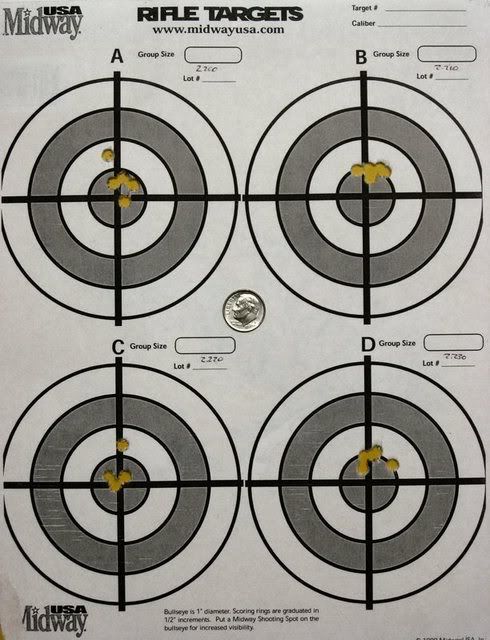Quote:
Quote:
so from what jack roberts is saying, if i were to be able to have a 40gr. v-max shoot accurately in a 1-9 twist, i would actually be better with the 1-9 over the 1-12.
Don't think you're comprehending what we're saying. The twist has NOTHING to do with fur damage.
It's the bullet, velocity, and shot placement.
A 1-12" twist limits you with bullet selection as you'll have to stick with the 60's on down. Maybe the 63 Sierra as it is a short bullet.
A 1:9 should still let you shoot the 40's at warp speeds without nuking and give you better versatility if you want to shoot the heavies...
Good luck...
I and a friend, have Savage FVSS's in .223 Rem., with the 1 in 9 twist. They shoot 40 grain Vmax and 40 grain Nosler Bt's very well, sub .3" for three shots, when there is no wind.
However, when I first got it, I tried some 45 grain Hornady Hornets, which shot very well out of his 1 in 12, Weatherby Vanguard .223 Rem., but in the 1 in 9 twist Savage, they were coming apart, and 2 or 3 out of 5 wouldn't make it down to the target.
And, despite the fact that the bullets were having to jump over 1/8" to hit the rifling, they still shot exceptionally well. But, if your's does not, it should shoot the 50 or 55 Vmax or BT's well.
I have never tried the 50 grain or 55 grain Hornady SPSX's in the .223, although I did shoot the 55 grain SPSX's in my .22-250. It worked well until the velocities got a bit too high in the 1 in 14 twist barrel I had, but they may or may not be lower cost alternatives to the Vmax's and BT's. Someone else will have to answer that question for you.


